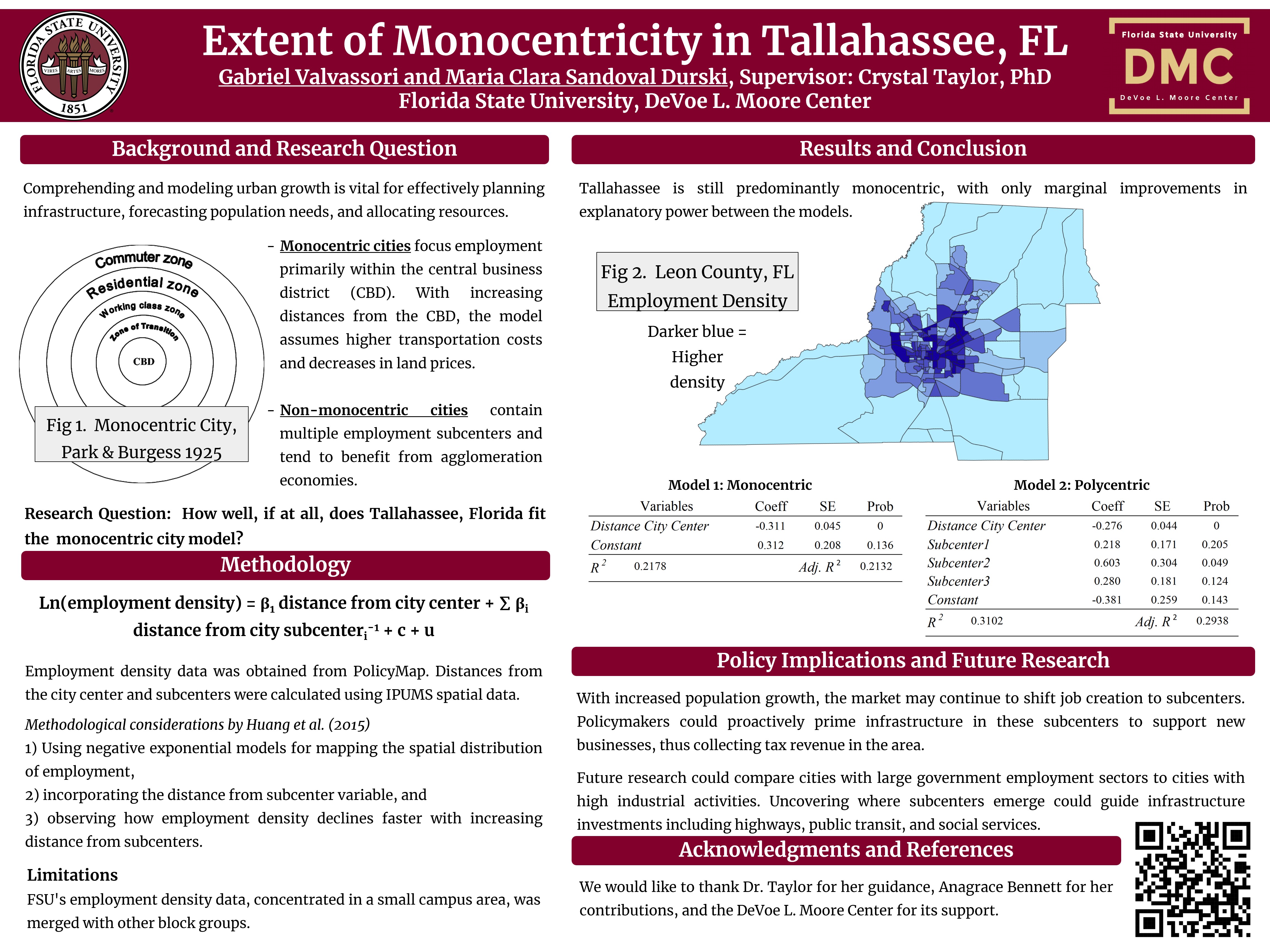Research Symposium
24th annual Undergraduate Research Symposium, April 3, 2024
Maria Clara Sandoval Durski Poster Session 2: 10:45 am - 11:45 am/374

BIO
Maria Sandoval is a sophomore at the College of Social Sciences and Public Policy, studying International Affairs and Economics. She grew up in Brazil and moved to Orlando in 2019. Since then, Maria's interest in the topics of migration and displacement only grew and are now areas of focus in her studies. She is interested in how those topics connect with economic policy and development and U.S. foreign policy.
Extent of Monocentricity In Tallahassee, Florida
Authors: Maria Clara Sandoval Durski, Dr. Crystal TaylorStudent Major: International Affairs and Economics
Mentor: Dr. Crystal Taylor
Mentor's Department: Economics Mentor's College: College of Social Sciences and Public Policy Co-Presenters: Gabriel Valvassori
Abstract
Understanding city growth and development is crucial for planning infrastructure expansion, predicting place-based population needs, and allocating resources efficiently. The monocentric model assumes concentrated employment in the Central Business District (CBD), rising transportation costs with increasing distance from the CBD, and decreasing land prices with increasing distance from the CBD. Non-monocentric cities typically reap more benefits from agglomeration economies than monocentric cities. The researchers ask the following research question: How well, if at all, does the city of Tallahassee, FL fit the standard monocentric model?
Using 2021 IPUMS maps and data from PolicyMap, researchers conducted two regression analyses (one monocentric model and another non-monocentric model), inspired by researchers analyzing Beijing, China. The dependent variable for both models is employment density. The independent variable in the monocentric model is distance from the city center. For a non-monocentric model, the independent variables are distance from the city center, and the distance from the subcenter. This represents how non-monocentric models have different job concentration centers.
Preliminary results show that Tallahassee remains largely monocentric, with only marginal improvement in explanatory power between monocentric and non-monocentric models. Usually, cities begin as monocentric, becoming non-monocentric as they grow. However, Tallahassee is the capital of Florida and a significant portion of employment is centered on government activities. The government's resistance to market forces may explain Tallahassee’s continued monocentrism, despite non-monocentrism being more effective with agglomeration economies boosting wages, efficiency, and reducing production costs due to lower transportation expenses.
Keywords: Employment, Development, Tallahassee, Monocentric, Planning


